Note: I wrote the following article for our local paper, the Piedmont Post, where I have a monthly running/fitness column geared toward a general audience. Hence, it’s pretty basic advice. But sometimes we need to be reminded of the basics, which is why I’m posting it here.
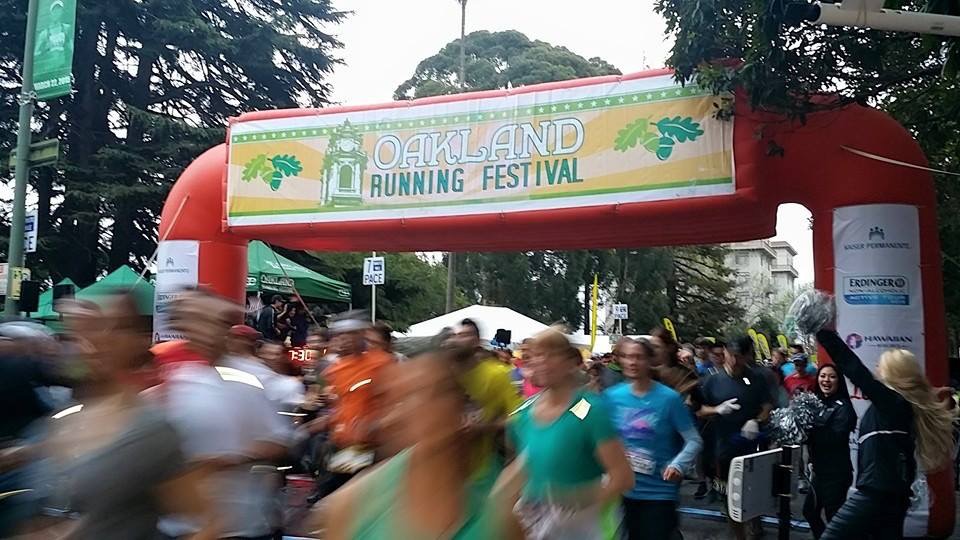
The start of the Oakland Marathon. Photo courtesy Oakland Running Festival’s Facebook page.
Last Sunday at the Oakland Running Festival, I stood a quarter mile in front of the finish line and cheered on several friends as they conquered the 13.1 and 26.2-mile distances.
Some showed signs of suffering, their faces etched with pain and their posture hunched over. Others, however, smiled and surged on the incline that led to the finish.
What made the difference between those who stiffly struggled and those who smoothly sped up? I’ll answer that with the example of my friend Sheila Hollander of Piedmont, an attorney and mom of two teens, whom I coached for the past two months.
Sheila began running half marathons in 2012, usually finishing a few minutes over two hours. In 2014 she got under 1:59 for a personal best, but last year’s race felt stressful and painful. She wanted to feel stronger and better at this year’s Oakland Half, and ideally, to break two hours again.
Fast forward to the happy ending: Sheila ran steadily and approached the finish line with a smile on her face and a sprint in her legs. She knocked a full five minutes off her previous time, finishing in 1:53:43.
“I felt much more confident about my running today than I had in the past because my training was aimed at building speed, strength and endurance,” Sheila said after the race. “Sarah and I had discussed the pace I was aiming for, and I was thrilled to watch that I was actually doing better than my goal from the very first mile. Although it was a tough run, I felt better than I had before since I was stronger and knew I just had to stay steady and focused.”
Her story shows what a difference just nine weeks of structured, dedicated training can make. Here are six key elements of the training plan I developed for her, which can be used for both marathons and half marathons.
1. Build endurance. To run 13 or 26 miles well, you need to incrementally increase the volume of your running—both the frequency and the distance—to cultivate stamina and patience. Instead of three times a week, try to run at least four to five times a week (six if you’re more advanced). Once a week, run longer—a distance of 33 to 50 percent of total weekly mileage; for example, a 10-miler if you’re totaling 20 to 30 miles per week. Gradually build the duration of the long run to at least the length of time you estimate the race will take you.
2. Build strength. This doesn’t mean you have to become a CrossFit junkie. Rather, you should aim for running-specific strength training a couple of times a week. My strength workouts take only 20 to 30 minutes, but they make a huge difference. I have Sheila and other clients do hill repeats to strengthen their legs (and heart and lungs). We schedule core work (abs, obliques, glutes, hip stability/mobility) and balance exercises because a strong core and balance are essential for good running form and injury prevention. And we don’t neglect the arms; at a minimum, we do basic bicep/tricep workouts.
3. Build speed. Once or twice a week, get your speed and heart rate up to the point where you can no longer hold a conversation while running. Start with runs at a “comfortably hard” pace that feels intense but sustainable for 20 to 30 minutes. Then introduce faster intervals, which are specific bouts of speed at shorter distances.
4. Prevent injury. Improper form and too much high-intensity running are the leading culprits of injury. Work on good, symmetrical biomechanics, and alternate hard-effort workouts with easy runs. Have at least one full rest day a week. Do therapeutic exercises and stretches to address your weak spots before the niggles become full-blown injuries.
5. Hone pace. A strong finish on race day depends on determining a goal race pace and practicing that pace for even splits. This goal pace can be calculated by running a mile time trial and/or using past race times. Working with a coach or using pace calculators online, in conjunction with studying the race course profile, will help you estimate what pace you should run each mile, and at what pace you should run your interval workouts and long runs in training.
6. Train your brain. Don’t underestimate the power of mental preparation to stay positive and determined. Mental strategies for race-day success include developing mantras to repeat in your head, studying and visualizing each mile, and anticipating and troubleshooting difficult points on the course.
Do you feel motivated now to run the distance and do the best you can? Then you might consider registering for the San Francisco Half or Full Marathon. It’s July 26, four months away—an ideal training horizon.
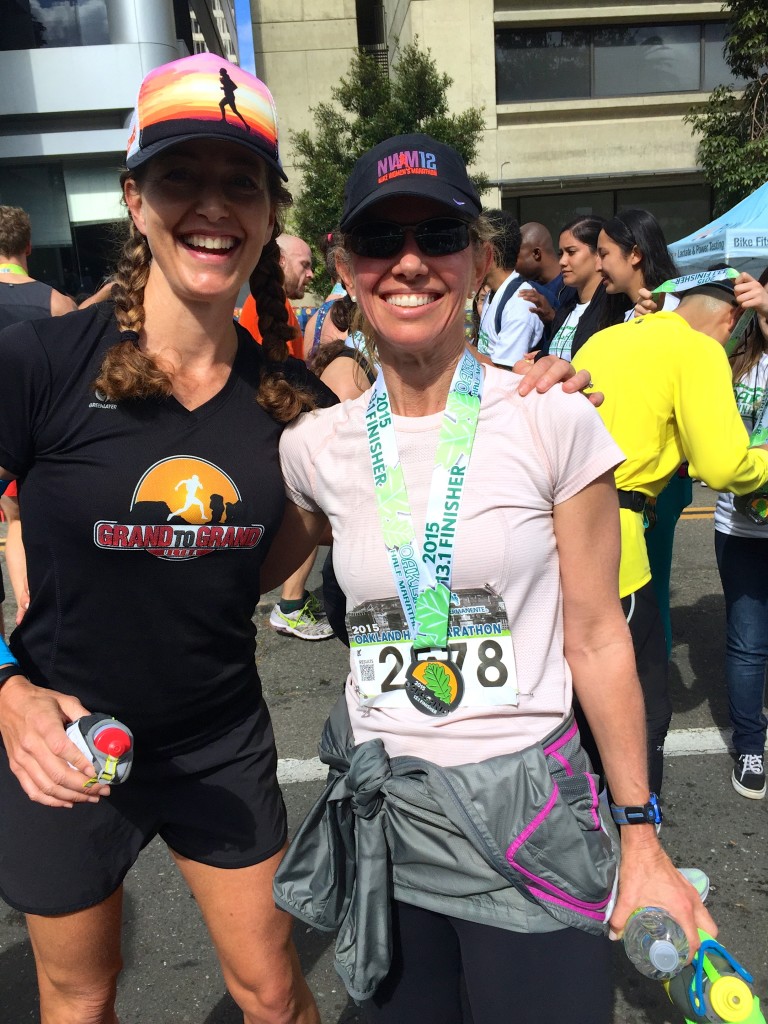
Sheila and me after the finish. Like my groovy Ultimate Direction Anton Krupicka trucker hat? Get one here!
My mountain/ultra/trail-running readers: I only mentioned the SF Marathon in the local paper, but of course there are so many great half and full trail marathons here in Northern California! I’m doing the Diablo Trails Challenge Half Marathon April 19 because I’m in the mood for a fun, scenic 13.1 (there’s also a great 50K; see my report from last year). Check the calendars of Inside Trail, Brazen Racing, Coastal Trail Runs and PCTR. Hurry to grab a spot in my favorite Oakland trail marathon, the Golden Hills on October 10, before it fills up.
I sincerely hope you’ll contact me if you are interested in hiring a coach for either road or trail, at any distance. I’m happy to report that my coaching business, which I officially launched January 1, is now well established and I’m loving it! My clients range from someone who just wants help learning how to run well at least three times a week, to someone who has a goal for a 50-miler, to someone who’s training for the Grand to Grand Ultra 170-mile stage race. I have eight current clients, several others in the pipeline and room for more.
One more note about the Oakland Marathon: I want to give a shout-out to my longtime friend Christine Chapon, the volunteer coordinator for the Oakland Running Festival. If recruiting and organizing volunteers weren’t enough, she also works tirelessly as the head coach for Running For a Better Oakland (RBO), which inspires and trains Oakland K – 12 students to lead healthier lifestyles with running and to run the 5K or half marathon. Christine volunteers countless hours and has raised thousands of dollars for RBO. She does so much to support local runners and running events; every community needs more people like Christine!
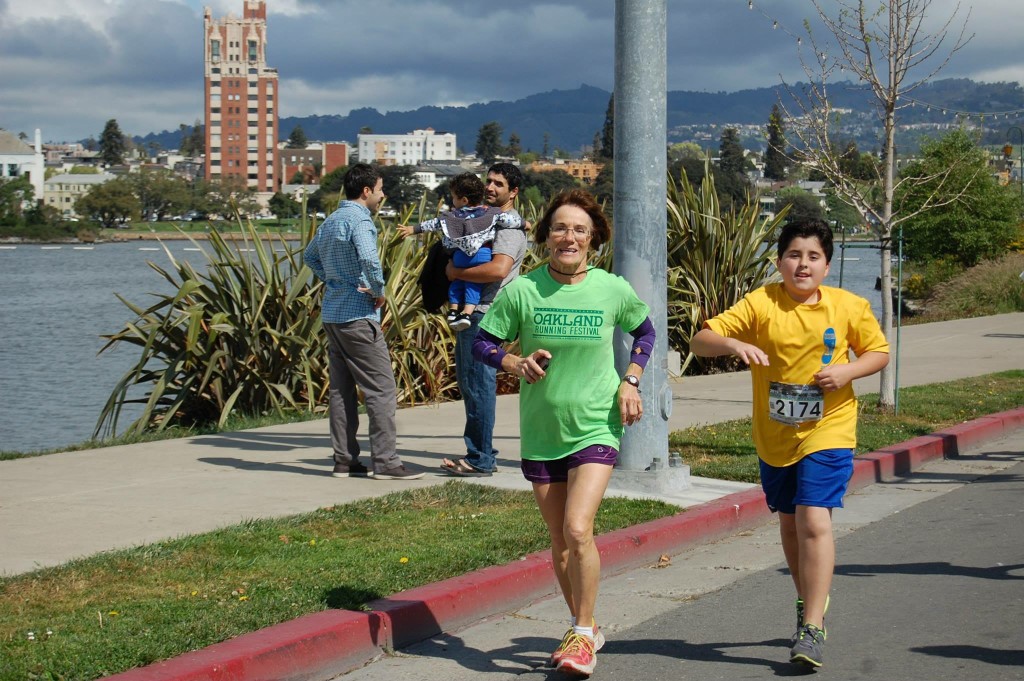
Christine helping a sixth-grade participant finish yesterday’s half marathon in the final miles by Oakland’s Lake Merritt. Photo courtesy RBO’s Facebook page.
And finally, a personal note: I didn’t run yesterday’s Oakland Marathon because I’m tapering for the March 28 Gorge Waterfalls 100K. I fear I’ve failed to follow the bedrock training principles described above in preparing for my own race. Unlike my last two good races—the Rio del Lago 100M and Tarawera 100K—for which I carefully planned and trained, the past six weeks of my life could form a list of “don’ts” more than “do’s” for ultra training. But, whatever. You may think I’m lowering expectations and will have a great race, relatively speaking, because I’ve done that in the past. But the sleepy, truly-5-pounds-heavier, tickle-in-my-throat-getting-sick, 45-miles-a-week-mostly-junk-miles person that I am right now really believes I am in sub-optimal shape. But hey, at least I’m not injured! I am certainly grateful for that.
A few more pics from the 2015 Oakland Half/Full Marathon:
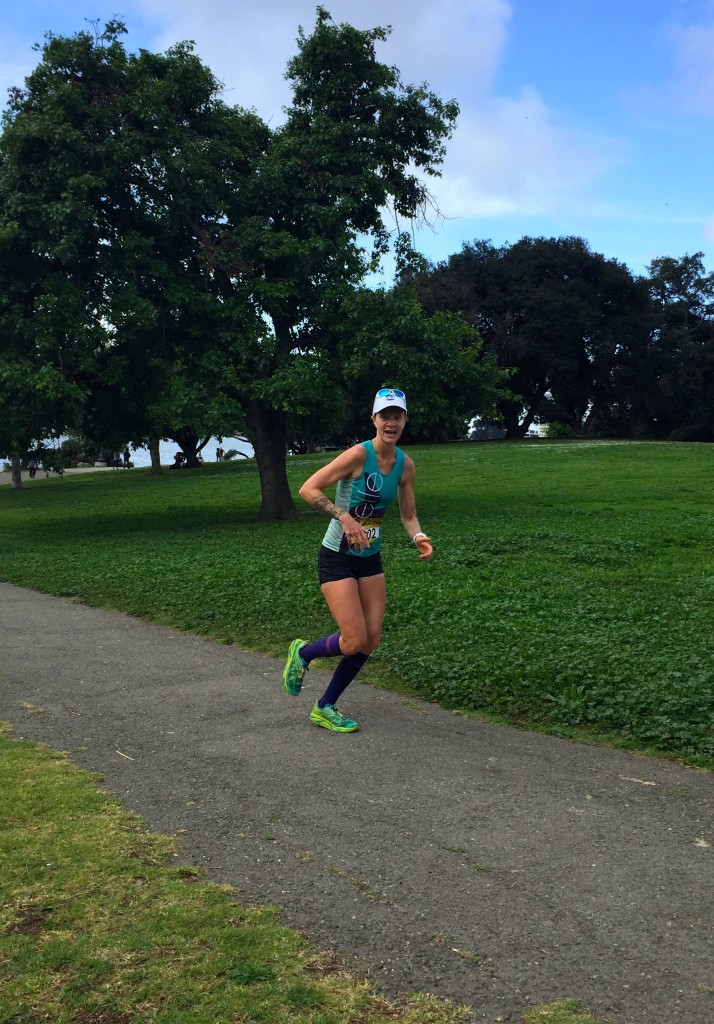
It was exciting to see Devon Yanko around Mile 24, on her way to becoming the women’s champ yet again. I didn’t know she was going to run it, since she just raced and won the Napa Marathon. Read about her awesome comeback season.
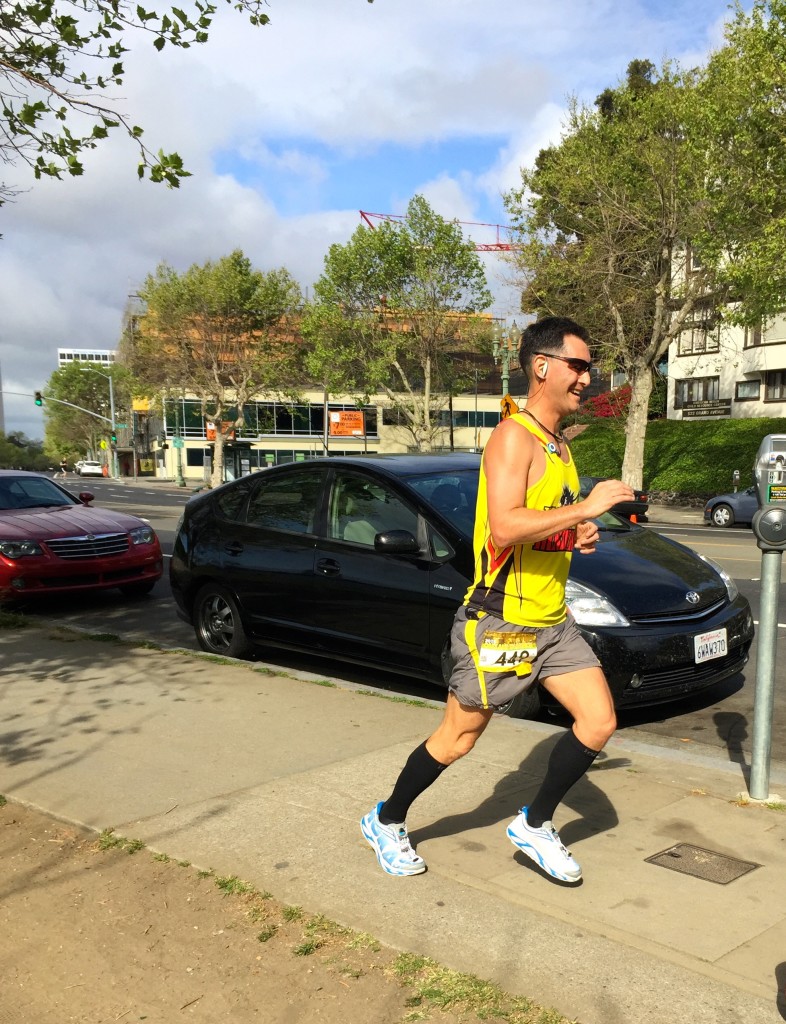
I often see Chris Jones on the trails at ultras, and suddenly there he was zipping by on his way to a 3:12 in the marathon, fresh off an Army mission in South Korea.
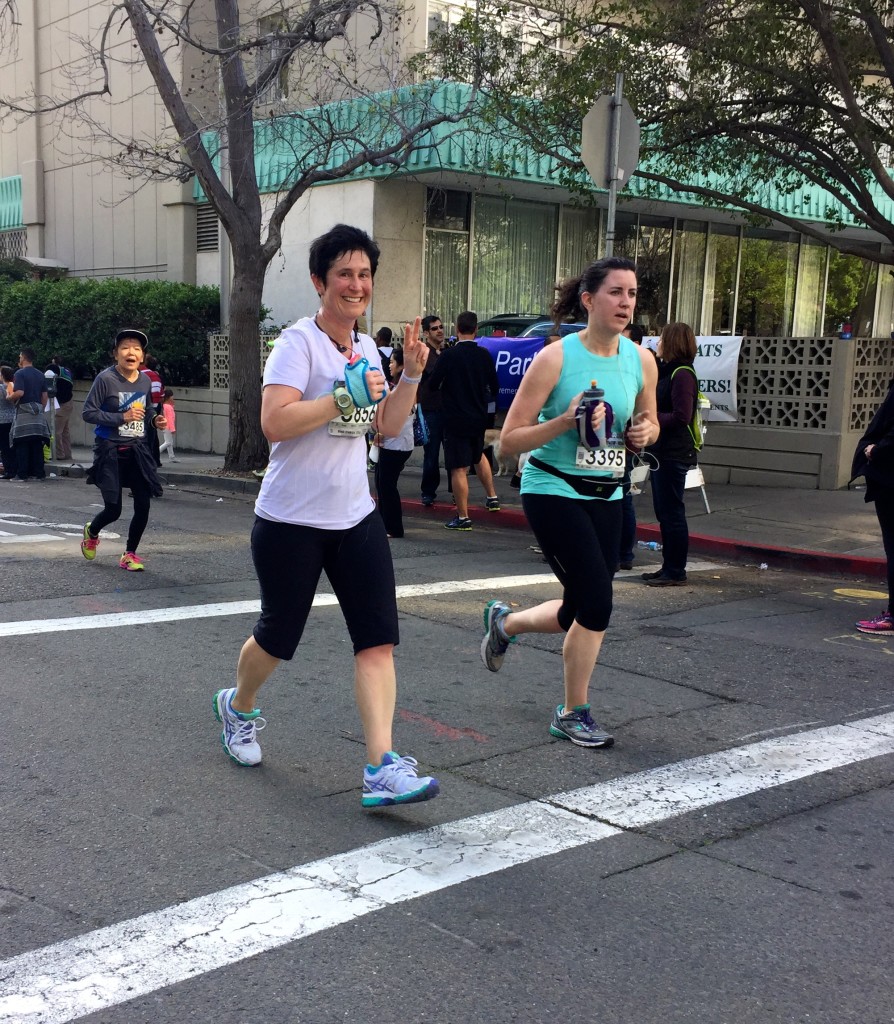
I was so happy to see another one of my clients, Stacey Sklar (on the left, smiling), finishing the Half strong after a tough few miles. She resisted the urge to walk, and she dug deep to speed up at the finish!
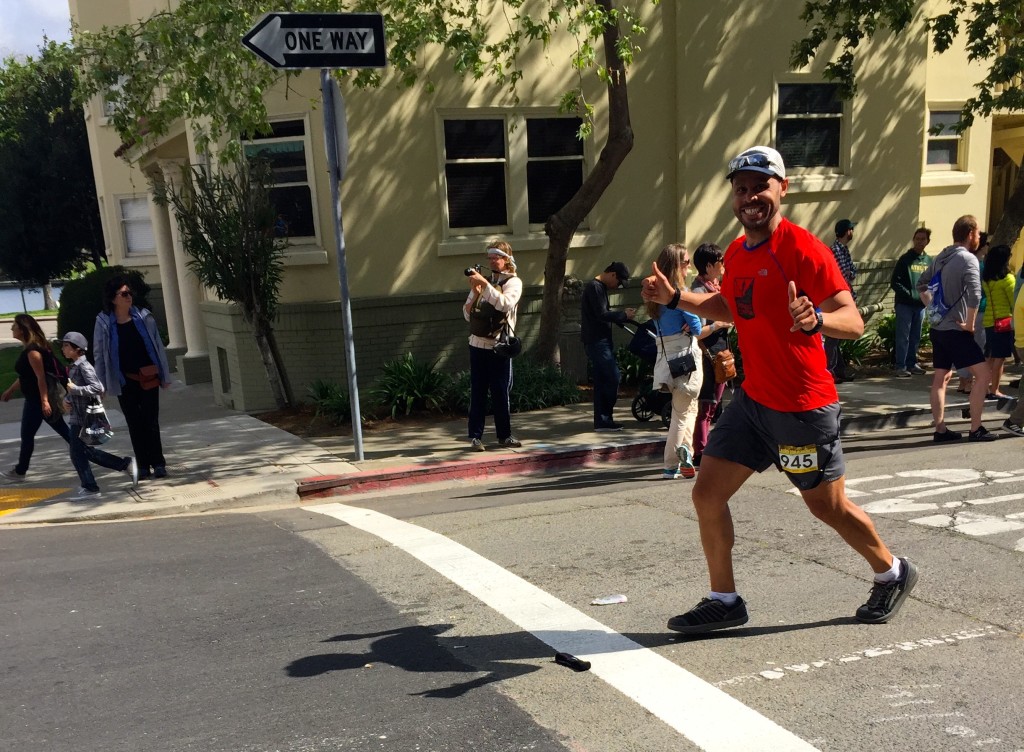
I was really surprised to see my friend Nate Dunn finishing the marathon. He decided just a day or so before to run it, having raced and PR’ed at the Way Too Cool 50K a few weeks ago. He came up afterward to say hi (see below). If Nate looks familiar on this blog, it’s because he was one of my crew members at Rio last November.
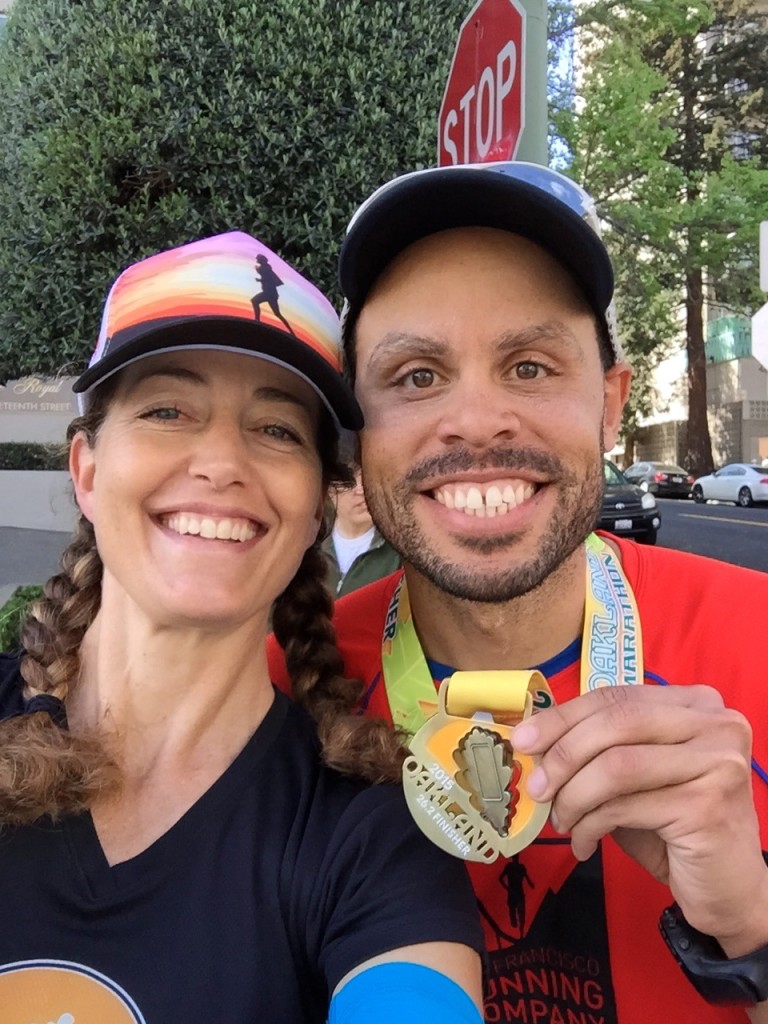
Which is cooler, Nate’s medal or my hat?
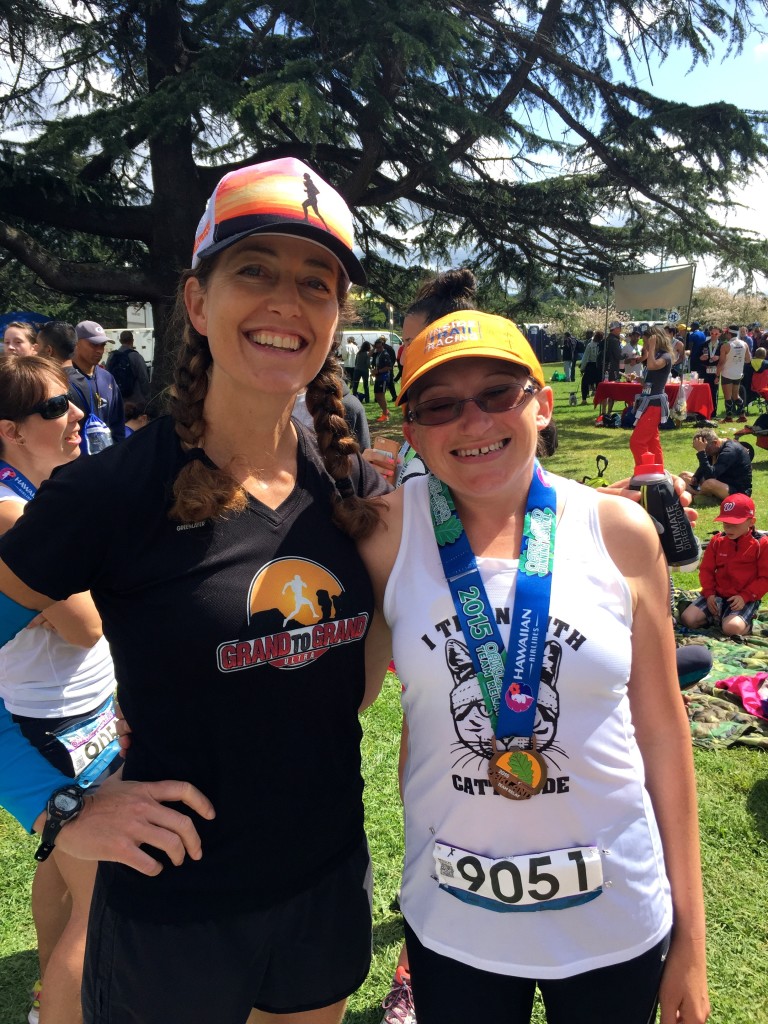
This is my client Kate Panepinto, who ran a relay leg. She’s getting ready for American River 50M in a couple of weeks. Actually, I should say, she IS ready!
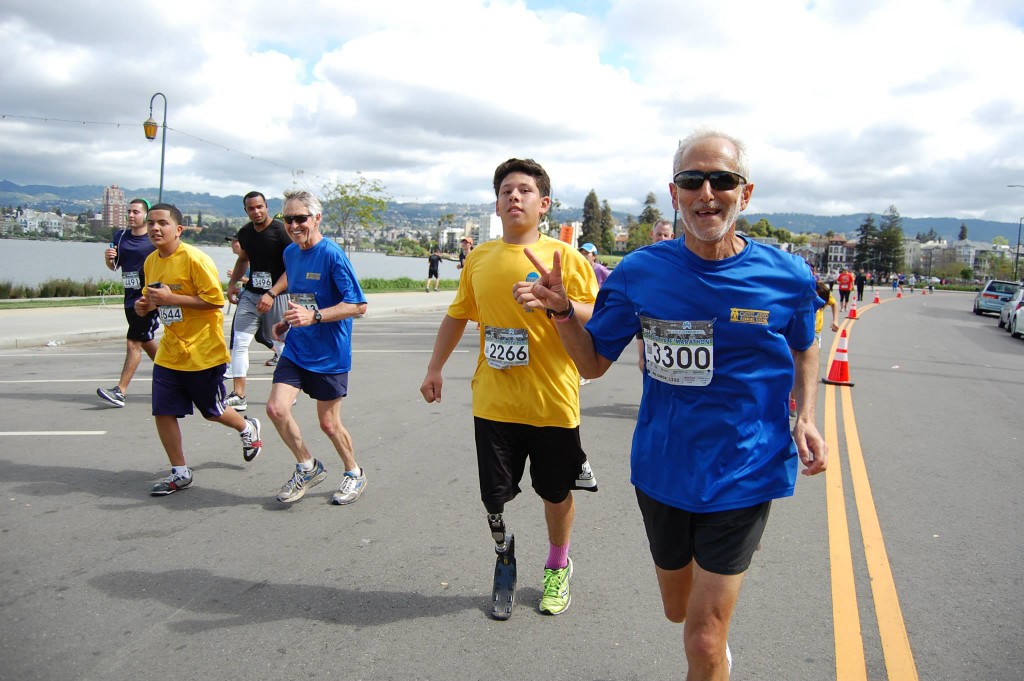
This, to me, captures the power of running and community. I got to know Howard Nathel, the volunteer in the blue shirt in front, a decade ago when we both volunteered for Students Run Oakland. We lost touch, but then I saw him at the finish. He’s still helping Oakland youth through Running for a Better Oakland. Imagine the courage of that young man behind him, whom Howard was coaching to get to the finish line. I like how the photo makes it look like Howard is missing his right lower leg too. (Photo courtesy RBO’s FB page.)

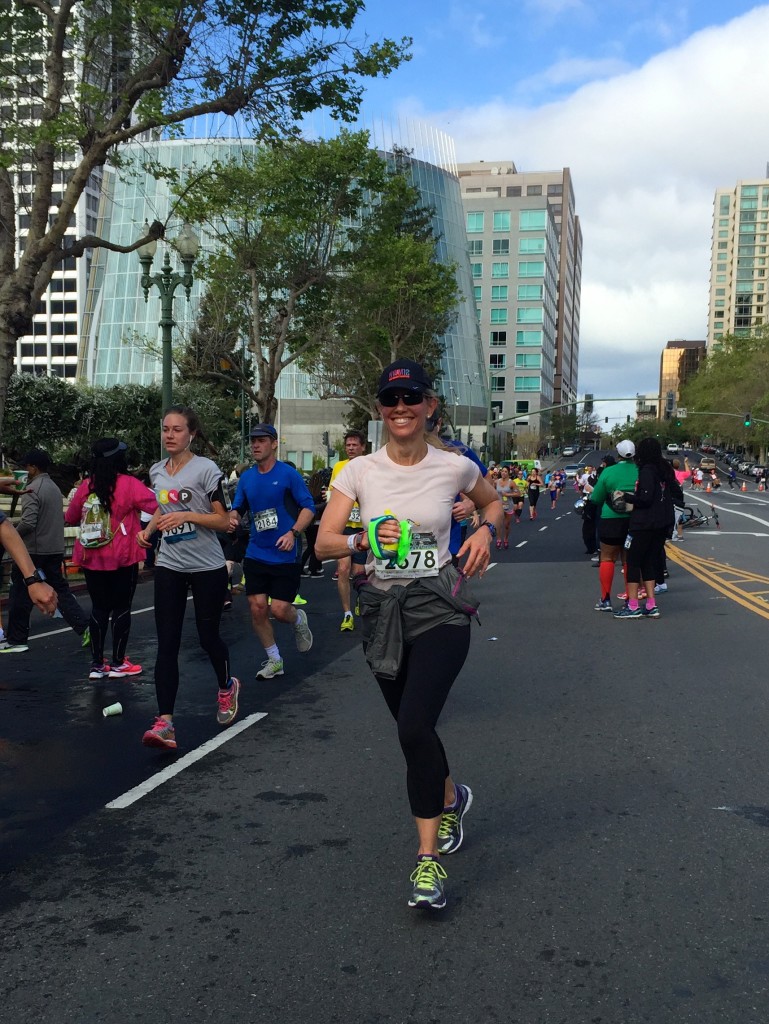
This is great and I love that you got to see so many friends/clients at that race. With regards the Chris picture, did the course require you to run on the sidewalk for a bit or was Chris just being Chris?
It’s great to see that this (whether) half-marathon or full marathon, there were participants in all age bracket. I wished that I was there running along with these groovy runners. However, I guess, my endurance and stamina ain’t ready to achieve this 10K. The tips you have mentioned were very much appreciated. These would really help me to enhance my endurance and stamina.